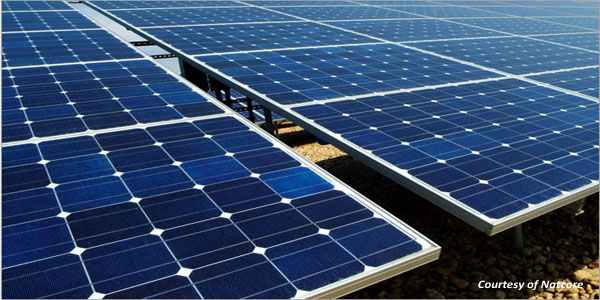The search for solar
Investors worldwide are seeking top new markets within solar PV. Giles Crosse investigates which options are most likely to repay investment.

As rising crude prices continue to dominate global energy trends, the potential for solar power to grab a chunk of planetary renewables markets remains strong. Nonetheless, risk also remains an ever-present danger, especially as new, nascent technologies leak onto the market, promising remarkable new efficiencies and standards that might turn out to be mere stargazing some years down the line.
These challenges come as Reuters reports Samsung SDI as estimating, “The global solar cell market to be worth US$70bn by 2020, more than double last year’s US$30bn, with falling prices and government support expected to drive demand globally.” This seems to point to a remarkably buoyant future.
Elsewhere on the planet however, there are more confusing signals, as incentivisation schemes close and open, and firms struggle to judge precisely how markets are likely to develop as centralised support ebbs and wanes. Meanwhile, Natcore scientists are saying they have, “Fabricated two families of multilayer quantum dot films, one with silicon quantum dots and the other with germanium quantum dots, both of which have demonstrated the ability to produce a photo-generated current.”
Achieved under the Natcore joint research agreement with Rice University, this advance, according to Natcore, has, “Significant consequences for the thin film solar cells that Natcore is developing in its Research & Development Center at Kodak’s Eastman Business Park in Rochester, NY. It could eliminate the need for a silicon wafer subcell, also accelerating Natcore’s drive toward a low-cost tandem solar cell.”
“This accomplishment by Professor Barron and his group is an outstanding achievement and confirms that making, and ultimately commercially producing, an all-quantum dot tandem solar cell using Natcore’s LPD film growth technology is on target,” said Dr Dennis Flood, Natcore’s Chief Technology Officer. “Our goal to show that multiple layers of quantum dots can be assembled using a low-cost, complete wet chemistry approach has been validated.”
Dr Flood continued, suggesting the research, “Could make it possible to use low cost, roll-to-roll manufacturing techniques to achieve a truly low-cost solar module that would have twice the power output of the average solar module on the market today.”
Balancing up such new science, uncertain legislative territory and massive worldwide potential enhances the difficulties associated with judging which areas are ripe for investment within global solar circles. Moreover, the existing economic climate makes judgements of any certainty tough to make, and adds wariness to shareholders unwilling to see investments dip should a foray into renewable circles prove unsustainable.
With all this in mind, Lux Research’s latest Solar Demand Forecaster should be welcome within the sector. It estimates that, “Portugal’s solar market is one of the hottest for investors through 2013. The country’s steadily rising internal rates of returns (IRR) for the six major solar technologies,” says Lux, “push it towards a nearly 400 MW annual market in 2016.”
“Elsewhere in Europe, high solar potential and favourable IRRs for investors are countered by uncertainty surrounding incentives, which could slow growth moving forward,” said Matt Feinstein, Lux Research analyst behind the Demand Forecast. “Italy and Germany will remain the Continent’s most stable markets with returns hovering near 9% and 22% through 2016, respectively, thanks to annual incentive step-downs.”
In other developments, Lux predicts that New Jersey, where high Solar Renewable Energy Credit prices pushed IRRs into the 40% range in 2010 and early 2011, will begin to suffer the effects of dramatic oversupply, forcing a collapse in prices with no floor in place.
California, which Lux earmarks as the largest market in the US, will continue to see steady growth thanks to stability and visibility with step-down incentives and recent RPS (Renewable Portfolio Standards) legislation.
On the Asian continent, India is forecast to become another market worth watching. With quarterly IRRs skyrocketing past 20% thanks to the newly introduced National Solar Mission, suggests Lux, it could become one of the strongest demand markets through 2016 as long as subsidies are extended past 2013, as expected.
| Table 1 – Top-5 locations by IRR (2Q11) |
| 1. New Jersey |
| 2. Portugal |
| 3. Australia |
| 4. Italy |
| 5. India |
IRR is the discount rate at which the net present value (NPV) of future cash flows from a capital investment equals zero. Capital expenditure is the primary factor in determining a market’s IRR, along with incentives and operating expenses. Put simply, it provides an apples-to-apples metric for investors to compare demand and project growth for solar across disparate markets.
“Key trends determining the extent of global solar rollout are IRRs, which we have calculated in this study, as well as the availability of financing and large accessible energy markets to attract suppliers, explained Mr Feinstein, talking to Industrial Fuels and Power. “Profitability of solar systems is driven by subsidies. Even in Germany, which does not have great irradiance (sunlight) relative to the rest of the world, subsidies have shown the ability to drive the market.”
Mr Feinstein argues that investors and firms in the market watch subsidies and announced renewable goals, which generally signal an intent to subsidise solar power within given parts of the world. “That is why markets like India have seen First Solar and SMA enter the country,” he says.
“New thin-film technologies often boast better performance in high-temperature markets due to lower thermal coefficients than conventional crystalline silicon, which sees decreases in efficiency as temperature rises,” he continued. “These technologies have a nice play in emerging countries with high energy costs and where bankability may be less crucial.”
Analysing competing forms of generation, he thinks that in terms of what type of energy will win, that is a geography-specific determination. “Wind energy or hydropower might win based on availability and levelised cost of electricity (LCOE; US$/kWh) in certain geographies. Ultimately, this is the most powerful metric for comparison because it can compare the cost of each source of energy.”
He also feels that economic factors are very influential in solar. “The global economic crisis has driven subsidy reductions or eliminations in many countries or regions, Europe in particular. Prior to the crisis, many had predicted that the solar market would have boomed faster than it currently is.
“However, China remained steadfast and invested in manufacturing capacity for solar. This has enabled strong price reductions to have solar better compete with natural gas, and has also triggered a shakeout of high-cost US and European firms like Solyndra and Spectrawatt, and production cuts by companies like Unisolar and Solarworld.
Ultimately, Matt Feinstein feels that solar has oil prices in its sights and emerging technology companies that cannot compete or will not compete fast enough will suffer. Alongside this, a rebound of the global economic situation can only help the technology see greater adoption, but high growth markets will soon need to address current limits for the amount of solar put on the grid.
“Many companies are already developing technologies to enable higher proportions of solar as part of the total energy market, in order to maintain industry growth long-term,” he predicts.
No Responses
Leave a Reply
Make sure you enter the * required information where indicated.
You must be logged in to post a comment.

 Click here to read the Q4 2011 Issue of Industrial Fuels & Power
Click here to read the Q4 2011 Issue of Industrial Fuels & Power 

